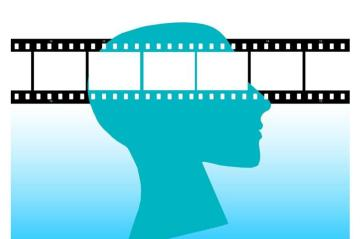
Students often take camera-phone photos of slides during an instructor’s presentation. But the question lies in whether this practice helps students remember information.
A first-of-its-kind study answers the question, finding that taking pictures of PowerPoint slides during an online presentation helped students remember the slide content better than for slides they did not photograph. The study was made by UC Riverside psychology professor and researcher Annie Ditta.
Ditta’s is the first study that specifically considered the lecture slides students photograph as part of their academic studies. Not only did students remember content better when they photographed it, but students also better remembered complementary(补充的) spoken-word-only content.
In both experiments of the two-part study, students were asked not to study the photographs before testing. In the first experiment, 132 university students were asked to take photographs of PowerPoint slides on their computer screens. Half took photos of the even-numbered slides; half took photos of the odd-numbered slides. For the 60-question fill-in-the-blank test that followed, students were asked to recall information from both the slides and the spoken-word-only portion(部分) of the teacher’s presentation. The first experiment found participants remembered the slide information significantly better when they took a photo than when they did not. However, there was no difference in memory for the spoken-word-only information.
In the second experiment, half of the 108 study participants could photograph their choice of slides, as long as they photographed about half. The other half of the participants were instructed to photograph only the slides the others chose to photograph. Whether the students chose the slides they photographed, or whether they were instructed to mimic others’ photo-taking, both sets of students remembered slide-photographed content better than non-photographed content. This time, however, they also experienced a benefit for remembering spoken-word-only content.
The study did not determine why the photo-taking helps. Ditta said that will be addressed in a planned follow-up study. Previous experiments found note-taking was superior to photo-taking in terms of remembering content. Ditta’s study did not compare note-taking with photo-taking. She said the interaction of note-taking and photo-taking will also be the subject of a future study.
本时文内容由奇速英语国际教育研究院原创编写,未经书面授权,禁止复制和任何商业用途,版权所有,侵权必究!(作者投稿及时文阅读定制请联系微信:18980471698)1.What can we know about the study by Annie Ditta?
A A scientist did this kind of study before.
B There were three parts of the study.
C 240 participants took part in it.
D It studied how slides developed.
解析:选C。C细节理解题。根据第四段第二句“In the first experiment, 132 university students”和第五段第一句“half of the 108 study participants”可知,迪塔做了两个实验来进行这次研究。第一个实验有132名大学生参加,第二个有108名参与者,即一共有240人参与这项研究。故选C。
2.What do the two experiments have in common?
A Participants remembered spoken-word-only content fast.
B Participants get the same grades as each other.
C Participants took the same amount of photos.
D Participants were unfamiliar with the photographs.
解析:选D。D细节理解题。根据第四段第一句的“In both experiments of the two-part study, students were asked not to study the photographs before testing.”可知,为了保证实验结果的准确性,学生被要求在测试前不要学习照片内容。故选D。
3.What does the underlined word “mimic” mean?
A Copy.
B Interpret.
C Distract.
D Boost.
解析:选A。A词义猜测题。根据划线部分前面的“The other half of participants were instructed to photograph only the slides the others chose to photograph.”可知,在第二个实验中,108名参与者中的一半可以拍摄他们自己选的幻灯片,只需拍摄大约一半的幻灯片。另一半参与者只拍摄前一半人所选择拍摄的幻灯片,即他们模仿(copy)前一半人的拍照。故选A。
4.What may Annie Ditta do in the future?
A Plan a new study about how photo-taking helps.
B Study the interaction of note-taking and photo-taking.
C Publish the result of her study in a science magazine.
D Study whether subjects have an influence on memory.
解析:选B。B推理判断题。根据最后一段最后一句“She said the interaction of note-taking and photo-taking will also be the subject of a future study”可知,迪塔的研究没有将记笔记和拍照进行比较,记笔记和拍照的交互作用将是她未来研究的主题。故选B。